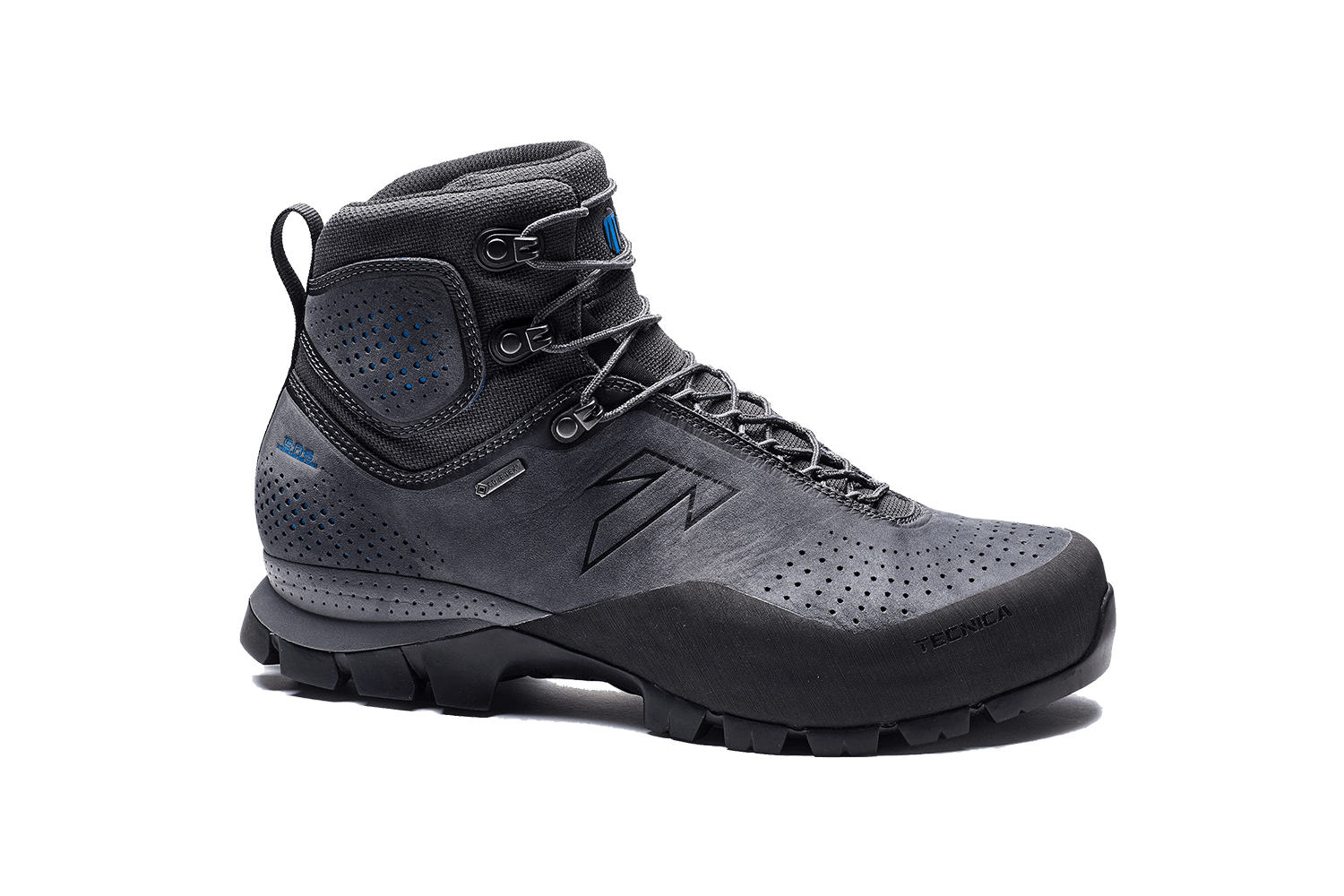
You know that magical moment on the trail when you realize you’ve found an awesome boot?
Actually, this a trick question: that magical moment doesn’t occur on the trail. It occurs after you’re finished, after, say, hiking 11 mountainous miles and realizing an hour after you’ve gotten back to camp, that you’re still wearing your boots!
Typically after a long hike, the first thing you do — even before heading to the cooler — is slip off those heinous hikers and slip on some sandals. It’s not a conscious decision: your barking dogs demand it.
Yet after hiking 11.2 miles in the Standing Indian area of the Nantahala National Forest in far western North Carolina, I found myself roaming around camp doing little chores still in my Tecnica Forge GTX hiking boots. It was our first outing together, save for a 3-mile Piedmont test drive; with the exception of some high-end, hand-crafted boots, hiking boots these days don’t require much, if any break-in. The 3-miler at Umstead State Park was more to see how these curious new boots felt on the trail.
The Tecnica Forge GTX is curious in that it borrows technology from another sport even more notorious for it’s agonizing fit: skiing. Or rather, for it’s once agonizing fit. For Tecnica years ago got the bright idea to mold the inside of the boot to a skier’s foot, creating a snug but not tight fit that not only was more comfortable, but more efficiently transferred the skier’s intention to the skier’s skis. Improved performance and comfort — crazy, man.
And so it goes with Tecnica’s Forge GTX hiking boot. (Read more about the technology and the fitting process from this blog and video from last week).
After getting it snugged into place just before the hike, and after rejiggering the laces 10 minutes in, as per my usual practice, I blissfully made the 4-mile, 1,100-foot vertical climb up the Kimsey Creek Trail to the Appalachian Trail. After another 1,100 vertical feet in 2.6 miles miles, I was at the summit. Some of my fellow hikers slipped their boots off before having lunch, some just loosened their laces. I took some pictures, ate tuna out of a tinfoil packet, took more pictures. I paid zero attention to my feet.
Same deal on the 4.5-mile descent back to camp. I marveled at the meadow of mountain grass, noted the curious steep-mellow-steep drop down the ridge, skidaddled down the trail after encountering a hornets’ nest. All downhill, all without my toes jamming into the toe box, a common problem no matter how tight I get my other hiking boots and shoes. Even the last half-mile walk back to camp on pavement didn’t raise a protest from my feet.
I mentioned the boot’s performance to a fellow backpacker, in Charlotte.
He smiled knowingly. Turns out he has a pair, too.
“I think it’s a real game changer,” he said.
The fact that the boot is relatively light (20.8 ounces) yet has bulletproof construction helps make the boot’s case. It’s expensive — $250 for the leather version, $270 for the synthetic — but the comfort alone makes it work it, let alone the fact that the Tecnica Forge GTX could have two to three times the life of my previous boots.
I don’t always hike in boots, but when I do, I’ll be hiking in my new Tecnica Forge GTXs. And I’ll likely be hiking in boots more often.
